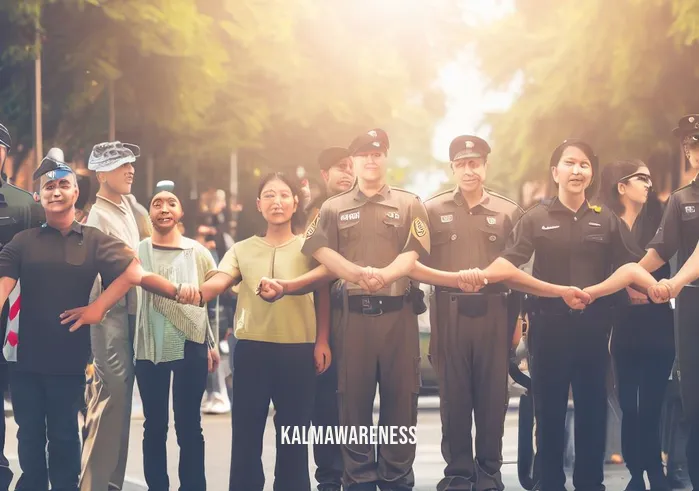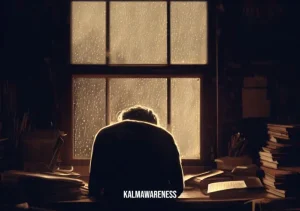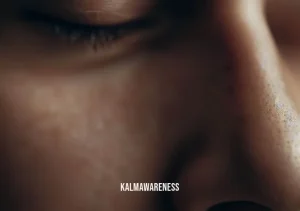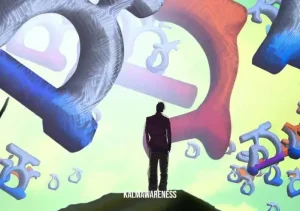Police Meditation: A Pathway to Mindfulness and Stress Management
In the bustling ecosystem of law enforcement, officers often confront high-stress scenarios. From chasing a suspect down a dim alley to mediating domestic disputes, they face challenges that demand immense physical, emotional, and mental fortitude. While these professionals are trained to handle such pressures, there’s an emerging tool they are turning to, both to maintain mental health and amplify their operational efficiency: police meditation.
Why Police Meditation?
With the increasing awareness surrounding mental health, especially in the realms of professions that are rife with stress, there has been a rising demand for methods to address it. Traditional avenues, such as therapy or counseling, are valuable, but there’s something to be said about techniques that officers can employ in the heat of the moment. That’s where the practice of mindfulness and meditation comes into play. By focusing on the present moment, officers can recenter themselves, making decisions from a place of calm rather than from a reactive state. As this article rightly points out, “life is available only in the present moment.”
Building the Mindful Muscle
It’s not just about isolated moments of meditation. To truly benefit from police meditation, one needs to cultivate the ‘mindful muscle’. The idea behind this is similar to physical training – just as officers train their bodies to react appropriately in high-stress situations, they can also train their minds. Developing this mindful muscle ensures that they’re not just momentarily calm during meditation but are equipped to handle stressful situations even outside of their meditation practice.
The Rich Tapestry of Mindful Techniques
When one delves deeper into the world of mindfulness, it becomes evident that it’s not a monolithic concept. There’s an array of techniques rooted in diverse traditions. From the intriguing ancient African meditation techniques to the principles of mindful martial arts, there’s a plethora of approaches.
One might wonder about the adaptability of these techniques for law enforcement personnel. Here’s where understanding the crux of each approach becomes crucial. Whether it’s learning to handle habitual thinking, which often leads to stress, or embracing the philosophy that every movement can be a meditation in motion, these techniques can be tailored for the unique challenges that police officers face.
The Global Evolution of Mindfulness
The concept of mindfulness isn’t limited to any particular culture or region. It’s a global phenomenon, as seen in the Spanish concept of mindfulness (mindful en español) or the French perspective of meditation pleine conscience. It signifies that irrespective of cultural backgrounds, the human mind seeks relaxation techniques to deal with stress.
For law enforcement, understanding this global perspective ensures that officers are not limited by any single approach. They have the flexibility to adopt a technique that resonates most with them. Furthermore, this global view provides an opportunity for cross-cultural learning. Police departments can share best practices, learn from each other, and evolve their stress management protocols.
Conclusion
In today’s rapidly evolving world, where the demands on law enforcement are ever-increasing, officers need every tool at their disposal. While physical training and strategic protocols are indispensable, the power of the mind cannot be overlooked. Police meditation offers an avenue for officers to manage stress, make more informed decisions, and, most importantly, take care of their mental health.
As we delve deeper into this subject in the upcoming segments, we will uncover the nuances of various meditation techniques, hear stories from officers who have embraced this practice, and understand how to make it an integral part of the law enforcement training regime. Equip yourself with knowledge and continue reading in the next segment, where we will journey further into the transformative power of meditation in policing.
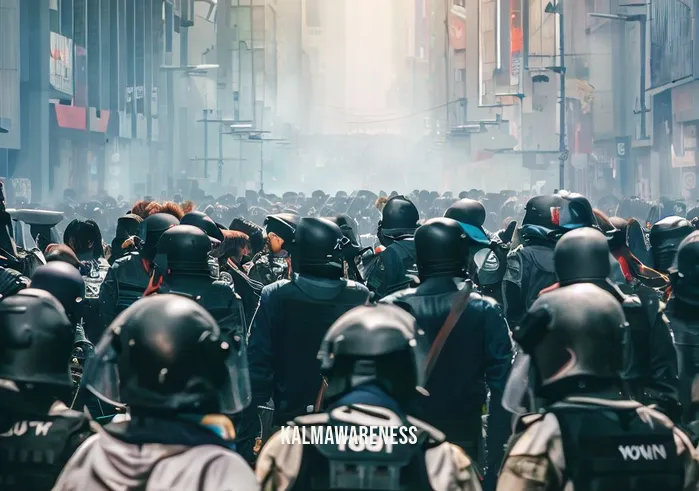
Techniques and Transformations: Exploring the Depths of Police Meditation
As we journey further into the landscape of police meditation, it’s pivotal to address its diverse techniques, their roots, and the transformative effects they hold. By broadening our understanding, we can appreciate the versatility of meditation and its applicability for police officers. Let’s uncover some essential facets that amplify the significance of police meditation.
Benefits Beyond the Badge
Police officers, under their stern uniforms and disciplined demeanor, are humans who face unique stressors daily. Meditation serves as more than just a technique for relaxation; it’s a tool for transformation. Here are some benefits tailored specifically for our law enforcement officers:
- Enhanced Awareness: Through practices like micromeditating, officers can enhance their situational awareness, crucial for their safety and public protection.
- Improved Decision Making: Mindful techniques help clear the fog of stress, leading to sharper, better-informed decisions.
- Emotional Balance: Meditation helps in keeping emotions in check, essential when dealing with volatile situations.
- Resilience Building: With resources like mindfulness books for teens, even younger individuals can cultivate resilience. Imagine the strength officers can build using specialized techniques!
- Deepened Community Connections: Officers who meditate often report improved interactions with community members, fostering trust and collaboration.
Roots and Routes: Mapping Meditation Origins
The beauty of meditation lies in its universal appeal and its diverse roots. Different cultures have contributed to the rich tapestry of techniques that we have today. Here’s a concise table that traces the origins of some popular techniques and their relevance to police work:
| Technique | Origin | Relevance to Police Work |
|---|---|---|
| Micromeditating | Global, with practices like mindful hiking emphasizing the technique’s adaptability | Enhances alertness, especially during patrols |
| Ancient African Techniques | Rooted in ancient African practices | Encourages grounding and connection to nature |
| Mindful Martial Arts | Eastern Traditions, highlighted in the article on mindful martial arts | Builds discipline and physical-mental coordination |
| Pleine Conscience | French, as discussed in meditation pleine conscience | Fosters deep reflection and self-awareness |
| Meditation in Motion | Various cultures, showcased in meditation in motion | Allows active meditation, suitable for officers on duty |
Implementing Mindful Regimes
Just like any skill, the benefits of meditation are best realized when practiced regularly. This involves not just understanding its techniques but also weaving them seamlessly into daily routines. Institutions are taking note, with dedicated meditation consultants working to integrate these techniques into training regimes. Whether it’s through structured classes, like the Penn mindfulness class, or informal sessions, there’s a growing emphasis on making meditation accessible and effective for our officers.
Conclusion
The world of police meditation is vast, echoing with ancient wisdom and modern applications. As we’ve seen, this practice isn’t just a trend; it’s a transformative tool tailored for the unique challenges and needs of law enforcement officers.
As we gear up to dive even deeper in the next chapter, anticipate a closer look at real-life stories from officers who have embraced meditation. Their experiences, challenges, and triumphs will further illuminate the profound impact of mindfulness in policing. So, brace yourself and continue reading, for the narrative is about to get even more engaging.
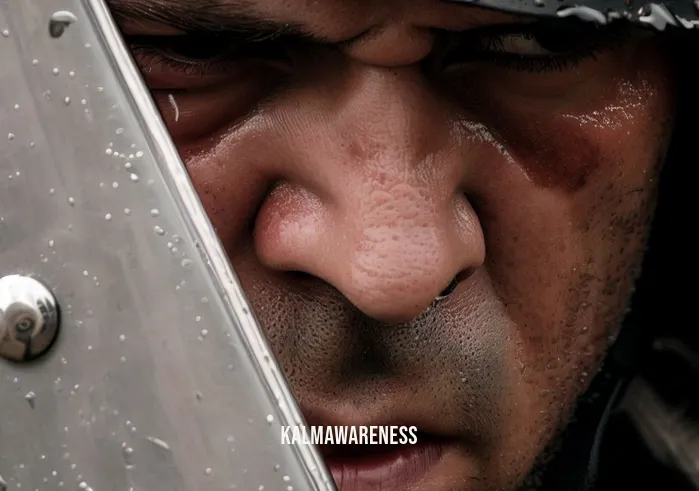
Echoes of Transformation: Inspirational Journeys through Police Meditation
Behind every badge is a story, often layered with challenges, hopes, and aspirations. As police meditation becomes more integral to law enforcement, countless officers have experienced transformative journeys, ones marked by self-discovery, resilience, and a renewed sense of purpose. This chapter illuminates some of these poignant narratives, further emphasizing the profound impact of mindfulness within the police community.
From Burnout to Balance: Officer Maya’s Story
Officer Maya had always been committed to her duty. However, the relentless pressures began taking a toll, leading her to the brink of burnout. It was during a community engagement program where she was introduced to mindful skills. This training, tailored explicitly for police officers, became her beacon.
“In the depth of chaos, I found a space of stillness, a refuge that meditation offered. It wasn’t about escaping reality but embracing it with a clearer mind.” – Officer Maya
Redefining Strength: Sergeant Jake’s Revelation
Sergeant Jake, a veteran with two decades in service, had his reservations about meditation. His definition of strength had always revolved around physical prowess. But a chance encounter with mindful martial arts transformed his perspective.
“True strength isn’t just about muscles or might. It’s about mental fortitude, the ability to remain calm amidst the storm. That’s the power of meditation.” – Sergeant Jake
The approach, which combines traditional martial arts with mindfulness, enabled Jake to channel his energy more effectively, proving that strength truly has multiple dimensions.
Building Bridges: Lieutenant Isha’s Community Connection
For Lieutenant Isha, community policing wasn’t just about ensuring law and order but fostering genuine connections. However, the divide seemed vast until she embraced techniques from the mindful miracle program. The sessions, which emphasize deep listening and presence, revolutionized her community interactions.
“Meditation taught me to listen, not just with my ears but with my heart. It bridged gaps, mended fences, and showed me that true policing is as much about compassion as it is about control.” – Lieutenant Isha
Through this newfound perspective, Isha spearheaded several community engagement initiatives, further solidifying the bond between the police force and the public.
The Ripple Effect: Spreading Hope through Meditation
While these stories spotlight individual transformations, it’s essential to recognize the collective impact. Police officers, by embracing meditation, become ambassadors of hope. Their experiences often inspire colleagues, families, and the broader community. Many police departments are now incorporating mindful stories for students, ensuring that the seeds of mindfulness are sown early.
“Change doesn’t happen in isolation. Every officer who finds peace through meditation creates ripples, touching lives and reshaping narratives.” – Chief Hernandez
Conclusion
The stories of Officer Maya, Sergeant Jake, and Lieutenant Isha, among countless others, paint a vivid picture of the transformative power of police meditation. These narratives underscore that beyond the techniques and practices, at its core, meditation is about human connection, self-discovery, and finding a deeper purpose.
As we transition to our next chapter, we will explore the practicalities – how police departments can institutionalize meditation, ensuring it’s not just an individual journey but a collective movement. So, remain with us, for the tapestry of police meditation is vast, and there’s much more to unravel in the chapters ahead.
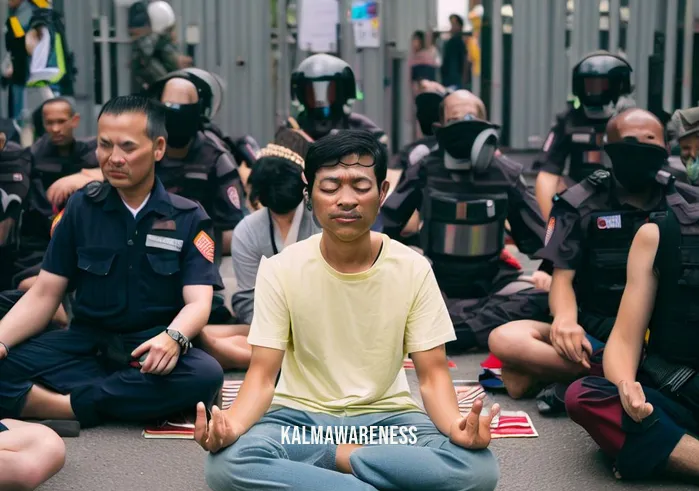
The Anatomy of Police Meditation: A Comprehensive Breakdown
Police meditation, a term that has seen increasing resonance in law enforcement circles, is much more than a mere buzzword. It represents a paradigm shift in how officers approach their mental well-being. Yet, to truly grasp its depth, we must dissect its many layers. This chapter offers a comprehensive breakdown, elucidating the intricacies of police meditation.
Key Components of Police Meditation
At its core, police meditation revolves around several foundational elements:
Mindfulness Techniques:
- Present Awareness: Encouraging officers to stay grounded in the present moment. Techniques such as those highlighted in meditation pleine conscience emphasize this.
- Observation without Judgment: A neutral perspective, where events or feelings are observed without labeling them as good or bad.
- Breathing Exercises: Central to meditation, focusing on one’s breath serves as an anchor to the present moment.
Stress Management:
- Recognition of Triggers: Identifying situations or emotions that escalate stress.
- Emotional Regulation: Harnessing techniques like those in a renewed mind employee portal to navigate intense emotions.
- Relaxation Techniques: Beyond just meditation, this includes practices like gratitude yoga which complement the relaxation process.
Physical Well-being:
- Posture Awareness: Maintaining a balanced posture, especially during long hours on duty.
- Meditative Movements: Incorporating exercises that sync the body and mind, such as meditation for menopause that demonstrates adaptability across situations.
- Diet and Nutrition: Fueling the body with foods that aid meditation and overall well-being.
Benefits: A Snapshot
The myriad benefits of police meditation can be categorized as:
For the Individual:
- Enhanced decision-making capabilities.
- Increased emotional resilience.
- Improved physical health, reducing ailments related to stress.
- Enhanced work-life balance, leading to better personal relationships.
For the Community:
- Strengthened community-police relations due to increased empathy.
- Reduction in cases of excessive use of force.
- More approachable officers, fostering an environment of trust.
For the Department:
- Lower attrition rates, as officers feel better supported.
- Enhanced team cohesion.
- Reduced medical leaves due to stress-related illnesses.
Barriers and Solutions
While police meditation holds immense promise, its adoption isn’t without challenges:
Skepticism:
- Barrier: Many officers, conditioned to prioritize physical strength, view meditation with skepticism.
- Solution: Holding workshops and sharing success stories can demystify meditation.
Time Constraints:
- Barrier: The demanding schedule of officers leaves little time for new practices.
- Solution: Introducing micro-meditation sessions, like micromeditating, which can be seamlessly integrated.
Lack of Trained Instructors:
- Barrier: Not all departments have access to trained meditation instructors.
- Solution: Leveraging online resources or collaborating with institutions like Penn mindfulness class for structured programs.
Conclusion
Police meditation, as we’ve unearthed, is a multifaceted entity, weaving together techniques, benefits, and challenges. It’s a testament to the evolving nature of law enforcement, where mental well-being is rightfully gaining prominence alongside physical training.
As we transition to our concluding chapter, we will reflect on the future trajectories of police meditation. What lies ahead? How will this practice further evolve? Join us in the final chapter as we ponder on these questions, synthesizing our learnings into a holistic vision for the future.
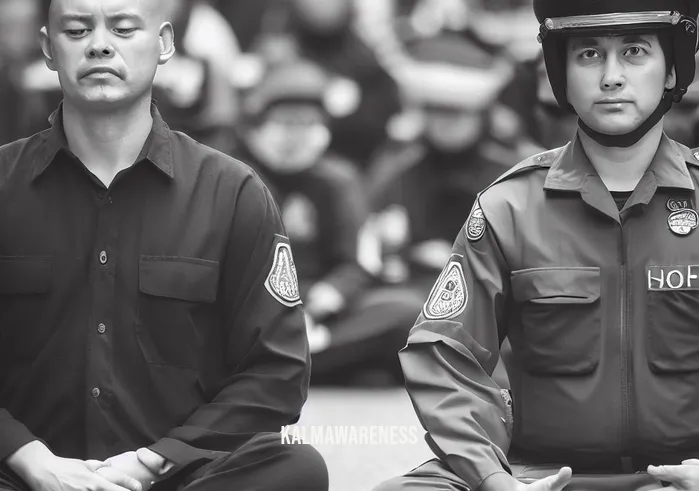
Policing the Mind: Reflecting on Our Journey Through Police Meditation
As we find ourselves at the confluence of insights, experiences, and revelations, one thing stands out distinctly: the transformative power of police meditation. This journey, spanning across diverse techniques, personal tales, and the broader impacts, has painted a comprehensive portrait of mindfulness within law enforcement.
Revisiting the Milestones
While our exploration has been vast, let’s distill our understanding:
The Essence of Meditation: Rooted in ancient practices, yet ever-evolving, meditation offers officers a sanctuary amidst chaos, as highlighted in resources like mindful en espanol.
Real-world Impact: The stories of officers, their challenges, and subsequent metamorphoses, showcase meditation’s palpable impacts.
A Multifaceted Practice: Meditation for law enforcement isn’t monolithic. From micromeditating to more structured practices such as those in mindful miracle, there’s a spectrum to explore and embrace.
Future Trajectories: With increasing institutional support, resources like a renewed mind employee portal point towards an exciting future where meditation becomes a cornerstone of police training.
Looking Ahead: A World with Mindful Policing
Imagine a world where every police officer is not only equipped with tools and training to maintain law and order but also with techniques to cultivate inner peace. Such a vision, while ambitious, isn’t far-fetched. It’s a future where the lines between strength and vulnerability blur, leading to a more compassionate, effective, and human-centric approach to policing.
A Heartfelt Thank You
To our devoted readers, your journey alongside us has been invaluable. Your curiosity, your openness to new ideas, and your commitment to understanding reflect the very ethos of what we aim to propagate through our magazine.
Your Next Steps: Feeling inspired? Eager to delve deeper? We invite you to explore more articles in our magazine. Perhaps start with revisiting some segments to solidify your understanding or branch out to other topics that pique your interest.
Conclusion
In the vast canvas of life, there are few professions as demanding, challenging, and vital as law enforcement. If police meditation can provide our officers even a sliver of peace, clarity, and balance, its value is immeasurable. Here’s to a future of mindful policing, enriched communities, and a world where the mind’s well-being stands tall alongside physical prowess.
Thank you for joining us on this enlightening voyage. Stay curious, stay inspired, and always remember – the journey of self-discovery, whether for a police officer or anyone else, is continuous. And as always, we promise to bring more such insightful content in our future editions. Until then, stay safe and stay mindful!
